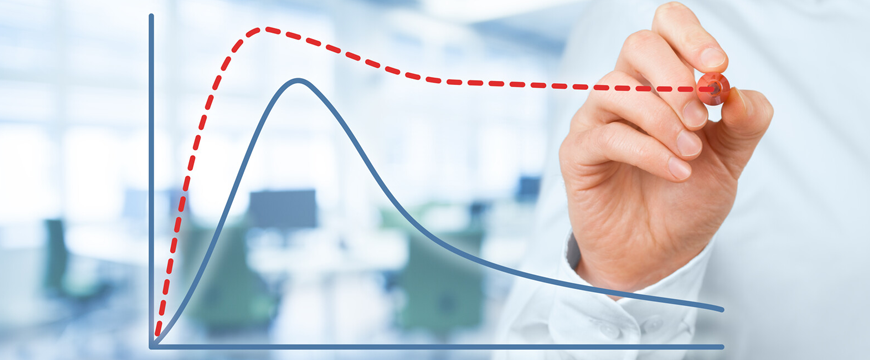
Product Lifecycle Strategy - Crucial Strategies at Every Stage of a Product’s Lifecycle
- Antonio Lizano
- August 2019
There are four distinct stages of a product’s lifecycle, i.e., introduction, growth, maturity, and decline. Each stage is associated with changes in the marketing position of a product. A sound product lifecycle strategy is vital in guaranteeing a prolonged lifecycle of your products or services.
Let’s dissect the four product stages and understand the various strategies that can be of value when building an effective product lifecycle strategy.
1. Introduction stage
This stage is usually characterized by slow growth with little or no substantial profit due to the extensive marketing and promotional costs. During this stage, product managers and business leaders should take the following steps. Endeavor to establish a clear brand identity. Connect with the right partners to help with promoting the product Put in place consumer tests/samples to targeted markets. Undertake proper pricing which reflects the quality you are providing while at the same time ensuring the price is one that makes the products purchasable. Some of the essential strategies used in this stage include:
- • Slow skimming - this involves launching of products at high prices and low promotional level
- • Rapid skimming - this strategy entails launching of products at high prices and high promotional level
- • Rapid penetration - involves launching products at low prices with significant promotion
- • Slow penetration - this strategy entails launching products at low cost and low promotional level
Limiting products or services to a specific type of consumer will also come in handy at this stage. Being selective can significantly boost demand for the product or service.
2. Growth stage
This is referred to as the period of rapid market acceptance and generation of substantial profits. The strategies to be employed here should be tailored towards increasing profits for the company. Among some of the strategies that can come in handy include:
- • Improving the quality of a product or service
- • Introducing new product features or support service to help grow your market share
- • Reasonable pricing; this should always be as high as is reasonable to maintain high demand and profits.
- • Entry into new market segments thereby expanding your customer base
- • Increase distribution channels to keep up with the growing demand
- • Skimming of product prices in case profits are lower than expected
The various strategies employed during this stage should aim at maximizing the available opportunities- increased sales, higher profits, and large market share.
3. Maturity stage
This product stage is characterized by slow growth, level of profits, and rising marketing expenditures aimed at trying to defend the product’s position against competitors. This stage is usually tricky for many business leaders. At this point sales have reached their peak levels, and the market is saturated. This calls for a change of tactics to guarantee a prolonged product lifecycle. Among the strategies that may come in handy during stage are:
- • Product modification - This may involve improving or adjusting some of the product features, its quality, pricing as well as differentiating it from other products in the same industry.
- • Market modification - This includes entering new market segments, winning over customers from your competitors, converting non-users, and redefining your target market among other strategies.
Limiting products or services to a specific type of consumer will also come in handy at this stage. Being selective can significantly boost demand for the product or service.
4. Decline stage
This is the final stage of a product’s lifecycle, and it entails declining sales and profits. This may be as a result of changing consumer preferences, advancement in technology and entry of better alternatives in the market. To save money, the following strategies will be crucial:
- • Reducing promotional expenditure on the product
- • Reducing the number of distribution outlets selling your product
- • Finding another use for the product
- • Harvest the product/service before you discontinue
- • Maintain the product with the hope that your competitors will withdraw in the course of time
- • Introducing price cuts to attract customers to buy the product
- • In the event of discontinuation of the product from your offerings, selling your brand to another business or significantly reducing the price to get rid of the inventory will be significant considerations.
Business leaders and product managers should always remain on the lookout to ensure the company’s products never get to the declining stage. Creating an extensive product lifecycle strategy that bears in mind the various stages is worth the effort and will prolong a product’s lifecycle. In most cases, for instance, businesses modify their product in the product’s maturity stage to avoid it from entering the decline stage. Understanding all these stages and closely monitoring the stage of your business will guide you on the best strategies to implement from time to time to ensure the product remains in the market for as long as you want.